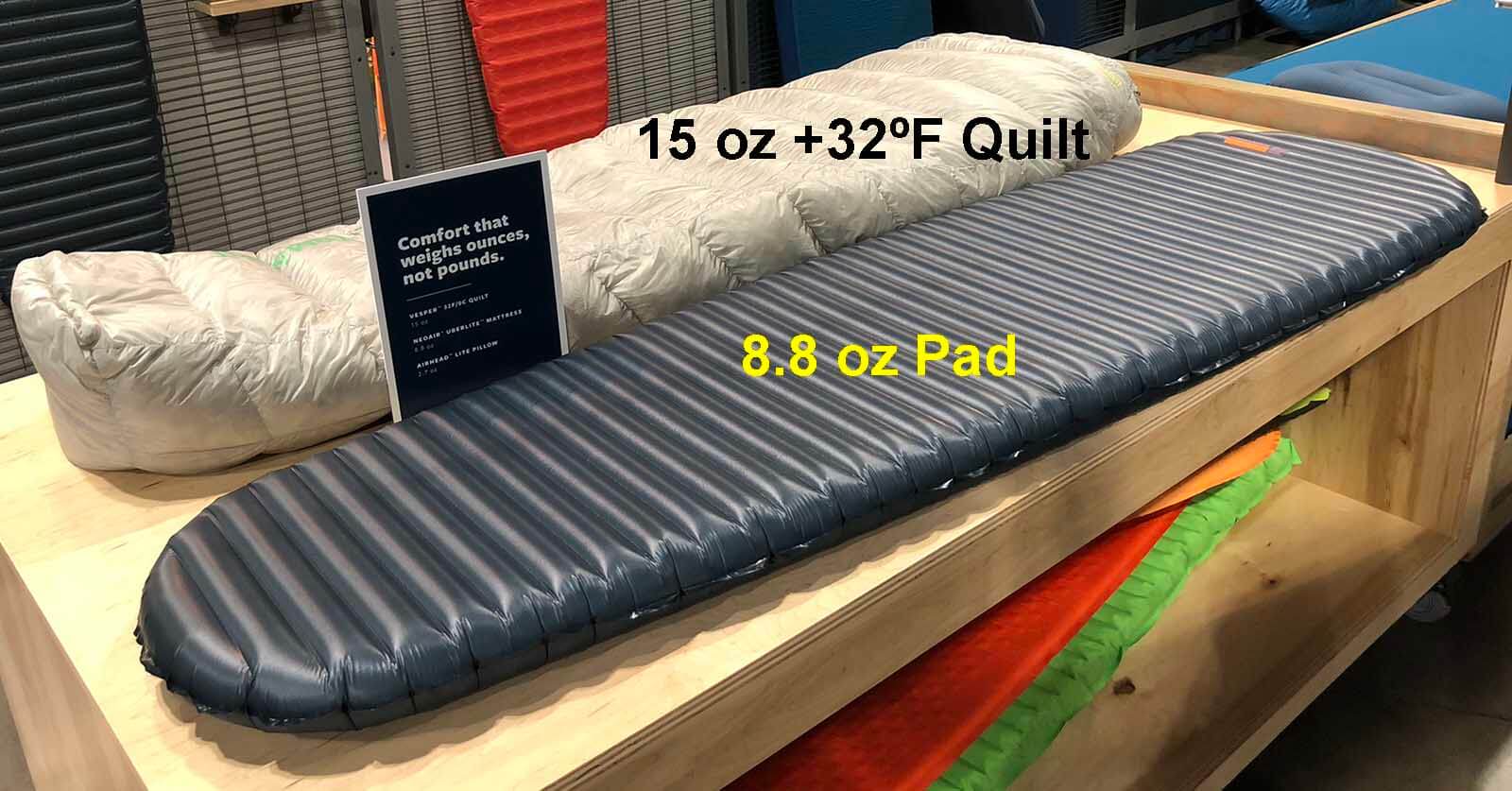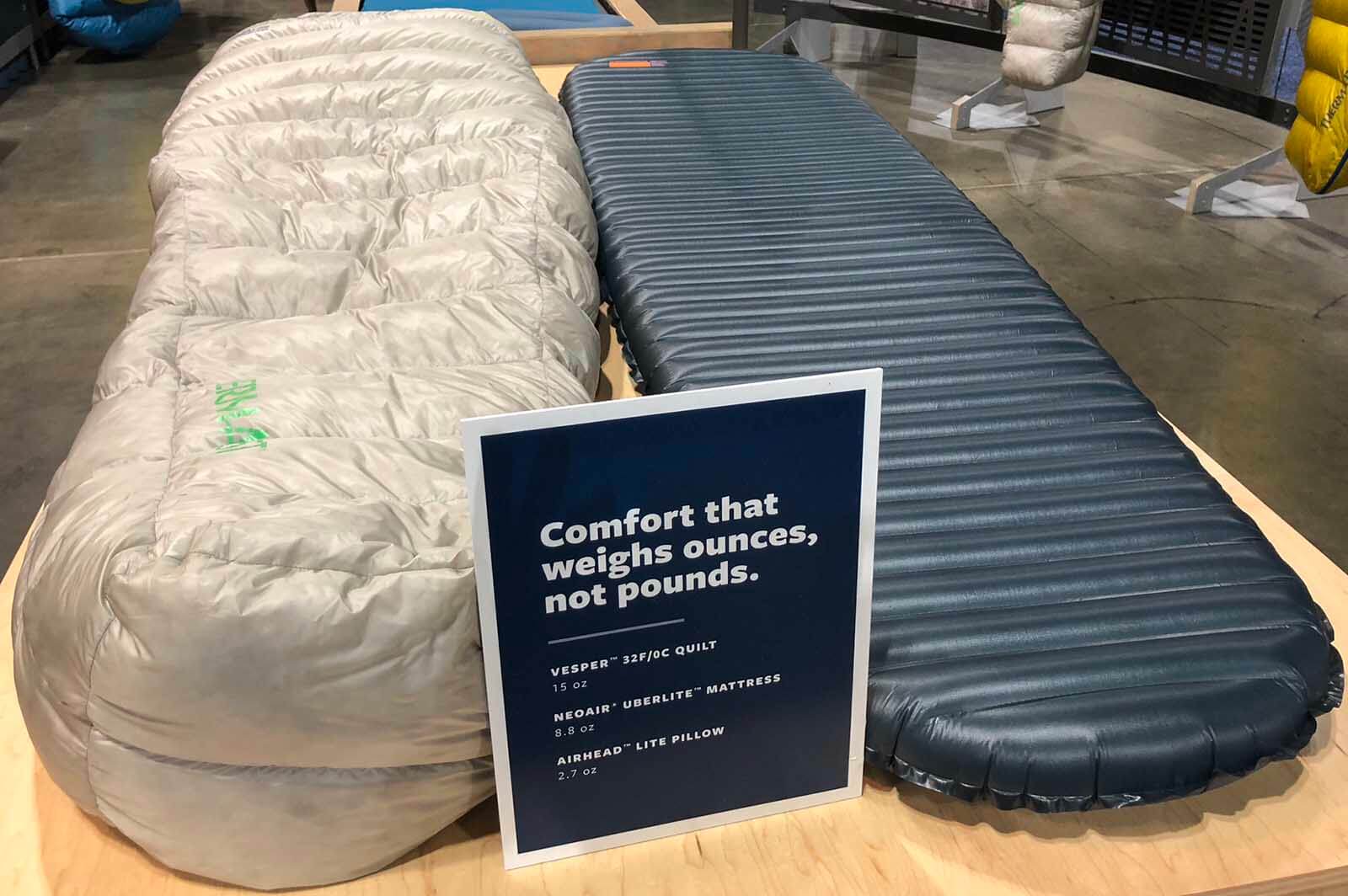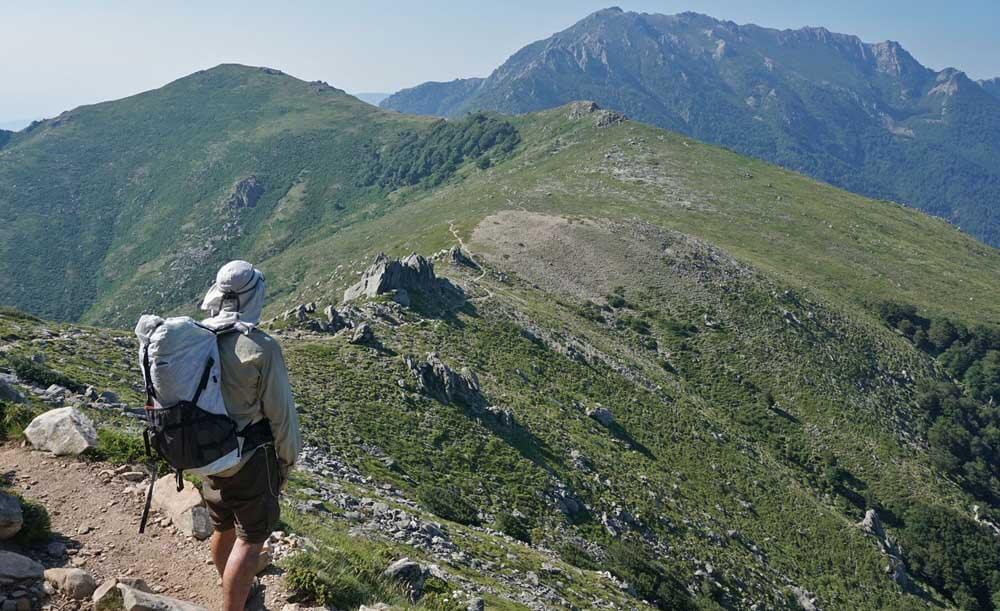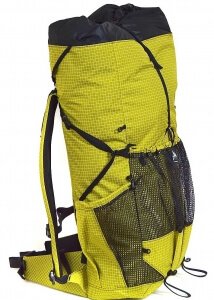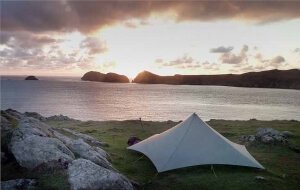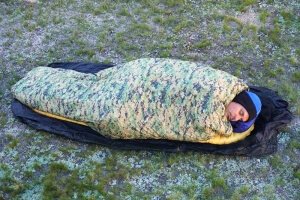Air mattress comfort at foam pad weights! The new Therm-a-Rest NeoAir UberLite Mattress is the lightest insulated backpacking air mattress. To achieve the low weight, the Therm-a-Rest NeoAir UberLite Mattress uses an extremely light high tenacity nylon fabric for its shell. At the show, Jennifer Curto of T-rest assured me that mattresses with the new fabric had gone through extensive testing and had even survived being run over by a Jeep!
Specs Therm-a-Rest NeoAir UberLite Mattress
- 8.8 oz, R 2.0 Size Regular UberLite (72x20x2.5 inches) $180
- 6.0 oz, R 2.0 Size Small UberLite (47x20x2.5 inches) $140
- 12.0 oz, R 2.0 Size Large UberLite (77x25x2.5 inches) $210
- Availability Spring 2019
In comparison To
- 12.0 oz, R 3.2 Size Regular, Therm-a-Rest NeoAir XLite Sleeping Pad $170
- 12.0 oz, R 3.9 Size Regular, Therm-a-Rest NeoAir XLite Sleeping Pad – Women’s $160 (66x20x2.5 in & our current favorite mattress for both men and women — warm and comfortable!)
A 1.5 pound +32 sleeping system! The combined weight of the new Therm-a-Rest NeoAir UberLite Mattress and the with the new 15 ounce Vesper Quilt weighs less than most sleeping bag’s or pad’s individual weights. I will post more soon on the exciting new Vesper +32 and +20 ºF Quilts that were also announced at the 2018 Outdoor Retailer Show this month.
new UberLite vs. XLite – How it Works
With the 1/2 Pound Therm-a-Rest NeoAir UberLite Mattress, Therm-a-Rest dropped the weight of their lightest full-size air mattress by 25%. This was done with a lighter shell fabric, lighter internal baffling film, and by skipping radiant heat reflecting layers.
Warmth: To save weight the new UberLite eliminates the ThermaCapture* radiant heat reflecting layers used in XLite pads. This in part results in an insulating value of R 2.0 vs the R 3.2 for the standard XLite and R 3.9 for the Women’s which has an additional ThermaCapture radiant heat layer. Nonetheless an R 2.0 should be sufficient for most 3-season campers. For four season I would look to the R 3.9 Therm-a-Rest NeoAir XLite Sleeping Pad – Women’s (I’ve been down to +12 ºF with this pad) or for cold sleepers the R 5.7 Therm-a-Rest NeoAir XTherm Sleeping Pad.
Durability: According to Jennifer Curto, the new UberLite uses a 15 Denier High Tenacity Nylon Shell Fabric and the internal material [that creates the heat retaining baffles] is a super unique ultralight film. So the new shell fabric is 1/2 the weigh of the 30D fabric used in the XLite mattresses. Nonetheless, Curto says: “We cycle tested and field tested the NeoAir UberLite, even driving over it with a Jeep!.. We are confident that it meets Therm-a-Rest performance standards. That being said, the mattress deserves to be treated like any premium piece of ultralight gear.”
Conclusion
The success of the new Therm-a-Rest NeoAir UberLite Mattress will most likely hinge on the durability of the new 15 Denier High Tenacity Nylon Shell Fabric. Alison and I have had good luck with the durability of our 30D HT Nylon Therm-a-Rest NeoAir XLite Sleeping Pads since their introduction. We’ve had only one leaker, and that was a very slow leak that only required topping off once each the night to get us through the trip. Post trip, Therm-a-Rest warranteed us a new sleeping pad. While the 15D UberLite fabric is light, manufactures continue to find better and lighter materials and improved construction techniques with performance equaling or close to that of older heavier materials. I hope this is the case with the new Therm-a-Rest NeoAir UberLite Mattress. I am on the list to be one of the earlier testers, so stay tuned to learn more.
The other thing of note is the R 2.0 of the pad. This is almost 1/2 the insulation of our favored R 3.9 Therm-a-Rest NeoAir XLite Sleeping Pad – Women’s pads. This should be just fine for camping much of the year. But in shoulder seasons where I expect nighttime temperatures to routinely drop below freezing I would consider using the warmer/more insulating R 3.2 to R 3.9 XLite pads.
*THERMACAPTURE™ (from Therm-a-Rest site)
ThermaCapture Radiant Heat Technology is a proprietary reflective coating that we apply to a range of surfaces. By reflecting radiant heat back to your body that is otherwise lost, this extremely lightweight coating turns that surface into a very efficient heat reflector, amplifying warmth without the excess weight or bulk of added, conventional insulating materials.
Disclaimer
This post contains affilate links. If you make a purchase after clicking on the these links, a portion of the sale helps support this site at no additional cost to you. I do not receive compensation from the companies whose products are listed. For product reviews: unless otherwise noted, products are purchased with my own funds. I am never under an obligation to write a review about any product. Finally, this post expresses my own independent opinion.

